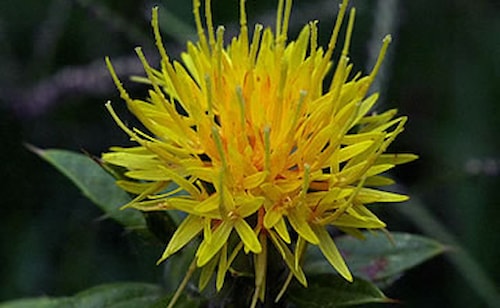Safflower
InFARMation Ag Advocacy Project

Because it requires 120 frost-free days, producers must plant safflower in late spring. The plant, in the same family as sunflowers, grows slowly and looks similar to a spineless thistle. A strong central stem produces a number of branches. Each branch produces between one and five spiney flowers, usually yellow or red in color. Safflower gets harvested in September, once the plant has finished flowering and most of the leaves are brown—dry but not brittle. Safflower can also be harvested as hay when the plant is still green.
Uses
In areas where there are not enough frost-free days for the seeds to reach maturity, safflower can be used as forage hay for livestock, however, safflower is primarily planted for the oil extracted from the seeds. With its high omega-3 content, safflower oil makes an excellent vegetable oil for use in cooking, margarine, and food, as well as in livestock feed. Researchers at Montana State University are leading experimentation with safflower as a bio-diesel and lubricant.
Growing Season
Planted late Spring after the last frost. Harvested before the first frost. Safflower requires 120 frost-free days, and little rain. In 1994, rainfall across Montana was so high that no safflower in the state could reach maturity.
Production
38.073 million pounds in Montana

Scientific Name
Carthamus tinctorius
Did You Know?
- Montana is the 2nd largest producer of safflower in the United States.
- Montana produces over 18% of United States safflower.
- Researchers at Montana State University are leading research on safflower as a bio-diesel.













